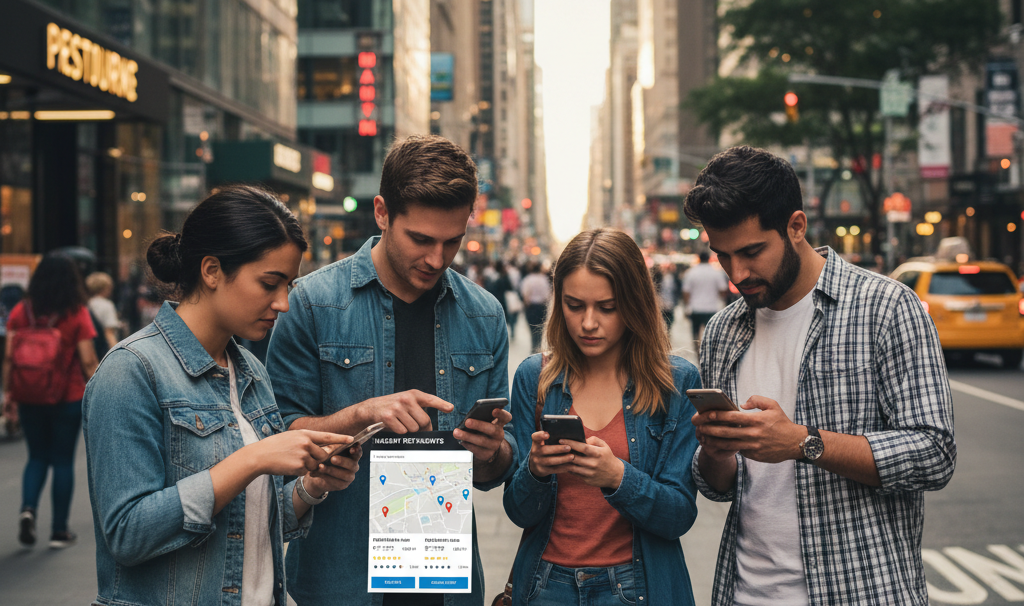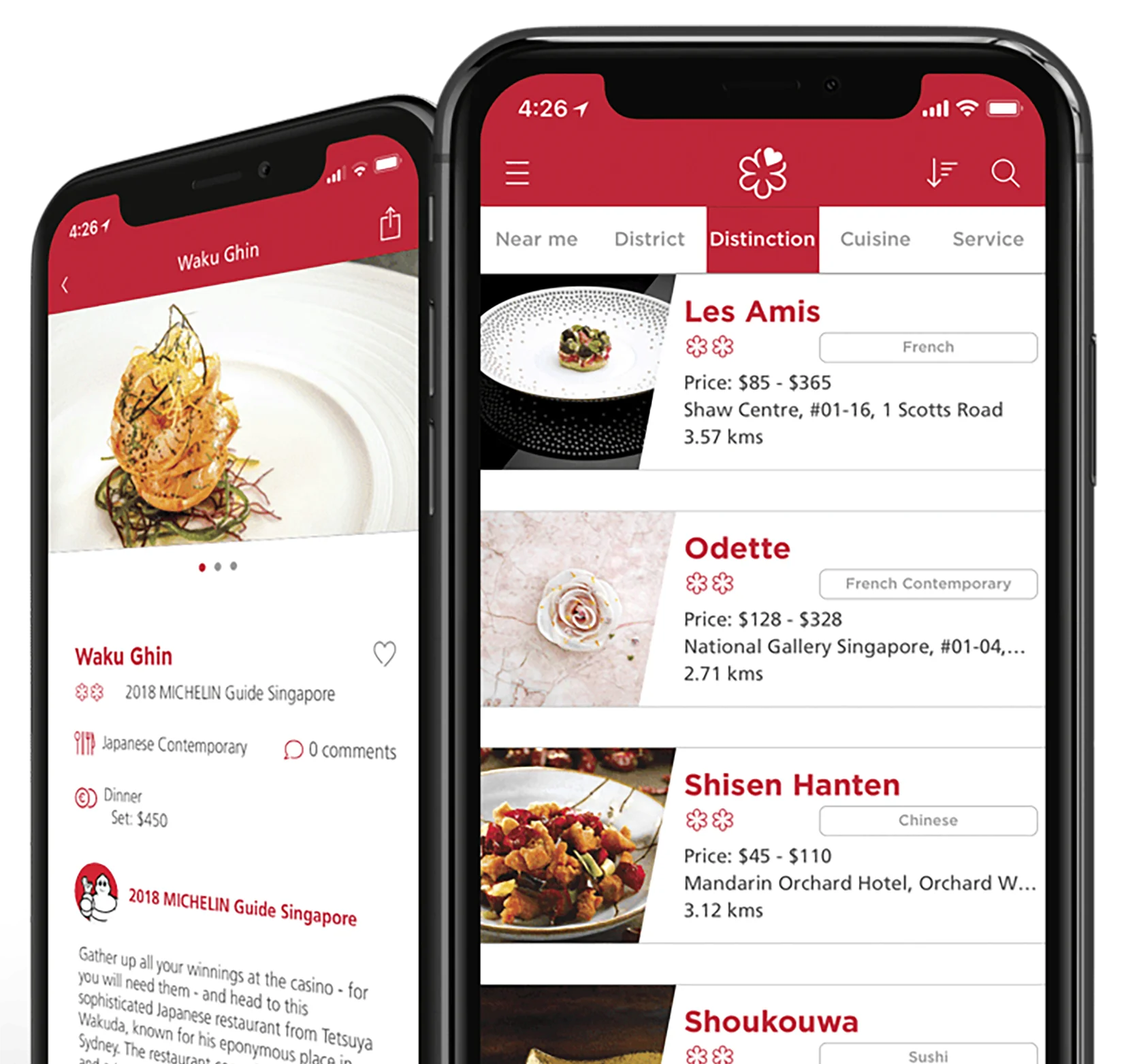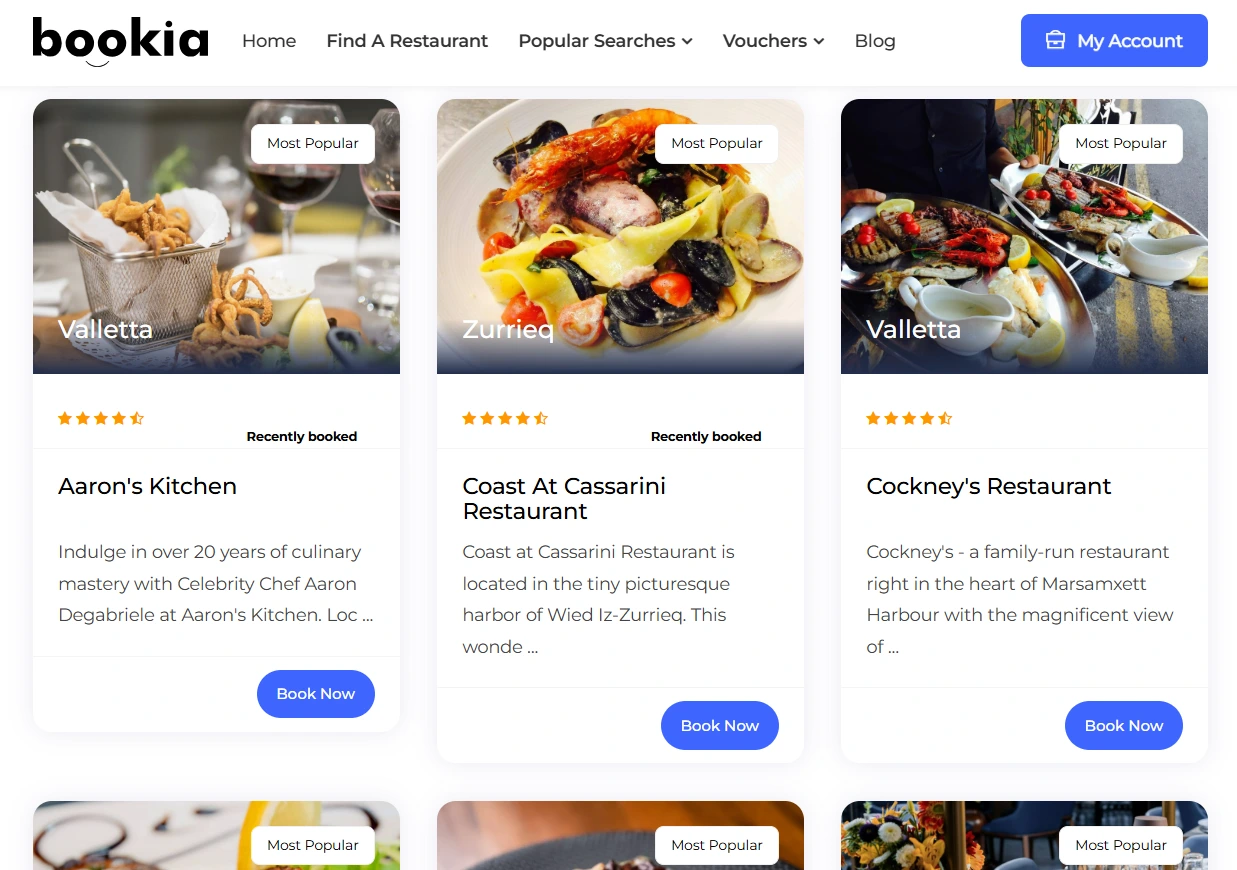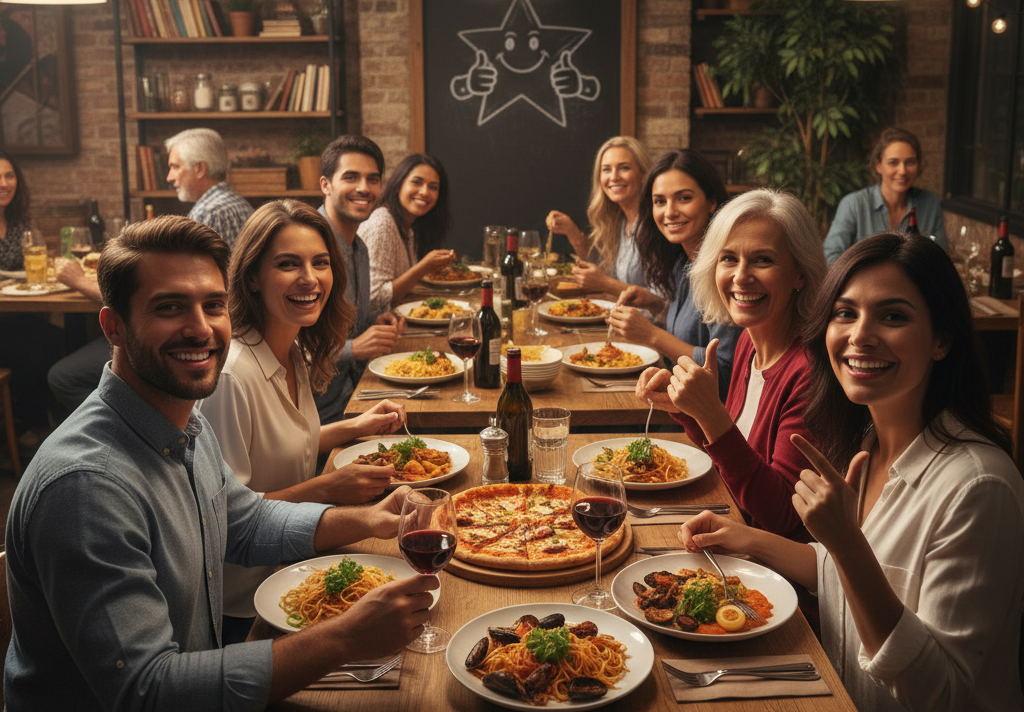If you’ve searched “restaurants near me” lately, chances are you’ve seen a Reserve a Table button right inside Google Search or Maps. That’s Reserve with Google, a feature that lets diners book instantly without ever leaving Google. For restaurants, it’s a low-friction way to capture hungry customers the moment they’re searching. Research showed “an astounding 75% of diners” who booked a table via Google were first-time visitors. But how popular is it compared to long-standing platforms like TripAdvisor? Here’s what the data shows:
TripAdvisor dominates the online booking market overall, holding between 37–43% of global “reservation and booking” share. That figure covers all types of bookings (hotels, attractions, restaurants).
Reserve with Google, by comparison, is still smaller — roughly 3–4% of the overall online booking market. While Google doesn’t publish restaurant-only numbers, it’s estimated that tens of thousands of restaurants globally are already connected to RwG via partners like Tableo, SevenRooms, and Resy<p;/li>
Zooming in on restaurants, TheFork alone seats over 20 million diners every month worldwide, making it one of the most widely used restaurant booking apps.<
OpenTable, another heavyweight, has reported seating over 31 million diners per month (pre-pandemic benchmarks) — showing the scale of demand for online restaurant reservations.

Top alternatives to find “restaurants near you”
TripAdvisor is one of the world’s largest travel and dining platforms, attracting nearly 400 million monthly visitors. Beyond hotels and attractions, its restaurant section is massive, with over 1 billion reviews and ratings.
A global favourite especially among tourists. Offers user-generated reviews and the ability to make reservations though bookings are commission‑based for restaurants. A recent study by 6th Sense shows that it holds a dominant 37.7% share in the reservation booking market – this includes (restaurants, hotels, attractions and experiences):
Global reach, especially strong with tourists.
Huge volume of user-generated reviews, giving social proof.
High visibility in Google Search (TripAdvisor pages often rank on page 1).
For restaurants, bookings via TripAdvisor/TheFork often come with commission fees.
Michelin Guide
The Michelin Guide is the gold standard for fine dining. While originally a printed guide, today it’s a global online platform and app showcasing restaurants that meet Michelin’s quality criteria. Listings range from Michelin-starred establishments to the more casual Bib Gourmand picks. Many restaurants listed on the MICHELIN Guide now link directly to reservation platforms.
- Huge prestige if your restaurant is included.
- Curated, trusted recommendations by professional inspectors.
- Appeals to foodies and high-spending diners.
- Limited to restaurants that are selected; you can’t “just sign up.”
- Audience is more niche, focused on fine dining and upscale experiences.
- Less relevant for casual restaurants, cafés, or local spots.

Yelp
Yelp remains a go-to in the U.S. and Canada, particularly for local dining and casual spots. With millions of reviews and strong local SEO presence, many people trust Yelp for “near me” searches. It also offers reservation management through Yelp Reservations and partnerships.
Strong for local searches in North America.
Large, active reviewer community.
Restaurants can claim their page and manage business info directly.
Yelp Reservations enables direct bookings (paid feature).
Yelp has a reputation for being strict with review filters (sometimes legitimate reviews get hidden).
Paid advertising and features can be costly for small restaurants.
Here’s how:
Strong for local searches in North America.
Large, active reviewer community.
Restaurants can claim their page and manage business info directly.
Yelp Reservations enables direct bookings (paid feature).
Yelp has a reputation for being strict with review filters (sometimes legitimate reviews get hidden).
Paid advertising and features can be costly for small restaurants.
The Fork
Owned by TripAdvisor, TheFork is one of Europe’s most popular restaurant booking systems. It lists thousands of venues across Spain, France, Italy, and beyond. Diners can book directly in the app, often with special discounts (like 20%–50% off food) :
Huge user base in Europe, particularly among locals.
Promotions and discounts attract new diners.
Restaurants pay commissions per cover, which adds up
Competing with many other restaurants on the same platform can dilute visibility.
Bookia (Malta & Gozo only)
Bookia is a homegrown booking app available exclusively in Malta and Gozo. It allows diners to browse, discover, and book local restaurants instantly, while giving restaurants more control over their visibility and bookings. It integrates with Tableo in order to provide a seamless table management and online reservations system, further improving the guest experience:
Tailored specifically for the Maltese market.
Supports local restaurants with strong community presence.
No need for tourists or locals to rely only on global platforms like TripAdvisor.
Easier to get visibility compared to competing on a massive international app.

Managing reviews across platforms
No matter which platform your restaurant is listed on, reviews are the currency of trust. According to research, over 90% of diners read reviews before choosing a restaurant, and a single star difference can swing business revenue by 5–9%. Best practices for review management:
Respond quickly to all reviews — thank happy guests, and address complaints calmly.
Use feedback constructively — recurring themes highlight what to improve.
Stay consistent — whether on TripAdvisor, Yelp, or TheFork, diners notice if a restaurant actively engages.
Automate reminders — some reservation systems, like Tableo, let you request reviews post-visit, encouraging diners to also leave a review on Google and TripAdvisor, helping build a steady flow of fresh ratings
Using reservation systems that integrate with these apps
Integrating with platforms like Google, TripAdvisor, and others ensures streamlined booking management in real-time. Benefits include:
Centralized dashboards for tracking all reservations.
Reduced booking errors and no-shows.
Faster, omnichannel booking experiences.
Booking analytics and reports
What to look for
Multi-platform integration — Should support Reserve with Google, TripAdvisor, social media, and your own website booking widget to reduce fragmentation.
Feature-rich management — Table layout planning, (floor plan), front‑desk control, CRM, reporting, reminders, deposits
AI & automation — Some systems (like Tableo restaurant reservation system) use AI virtual assistants to handle bookings across chat/social and manage guest flow even when your team is offline
Cost-efficiency — Reserve with Google often involves no extra fees, depending on your system or OTA; this keeps direct bookings low-cost
Ease of use – Choose a system that is user-friendly even for the least tech-savvy of staff. Managing bookings should not clog up the workflow.
Recommended examples
Tableo: Offers Google integration, reservation widgets, CRM, and AI features—all in one solution, with zero setup fees, a free trial, and scalable plans Tableo.
SevenRooms: A robust hospitality platform to manage reservations, that integrates with Google (since 2018), captures guest data, and automates personalized experiences and feedback collection
Other platforms (like Resy, OpenTable for restaurants, or niche regional systems) offer similar integration depending on your location and business size.

Conclusion:
The best restaurant apps work together
Finding the right place to eat has never been easier, and there are plenty of alternatives to reserve with Google. Whether it’s TripAdvisor for global reviews, Michelin for fine dining, Yelp for local favorites, TheFork for deals, or Bookia for Malta and Gozo, each platform has its strengths. But it’s not just about being listed, it’s about how you manage those bookings and the verified reviews that follow. Guests trust what they read online, and a smart reservation software that integrates with these platforms helps you capture more diners, reduce no-shows, and stay on top of feedback. In the end, Google may be the starting point for many searches, but diversifying your presence across multiple booking channels ensures your restaurant is discovered, booked, and remembered for giving an all-around top-notch customer experience.
Frequently Asked Questions
No. Tableo uses a lightweight embed code (like adding a YouTube video) or a dedicated URL. This means no plugins, no compatibility issues, and no impact on your site speed.
Not at all. Since Tableo runs off-site and integrates via a small script, your website remains fast and SEO-friendly.
Yes. You can adjust colors, fonts, and even add your restaurant’s logo so the booking flow feels like part of your website.
Absolutely. The booking widget is fully responsive, ensuring a smooth guest experience on smartphones, tablets, and desktops.
Yes. Tableo connects with Google Reserve, Instagram, and even QR codes on menus. All bookings sync in one dashboard.
No problem. Tableo supports multi-venue management, so you can control reservations across different locations from a single account.
Unlike plugins, Tableo is purpose-built for restaurants. It offers real-time table management, no-show protection, AI assistance, and multi-channel bookings—without the headaches of plugin updates or conflicts.
Ready to take bookings seriously?
Try Tableo’s free version for up to 100 covers monthly– no credit card, no fuss.
Free Version – Free Setup – Free Training – Free Support


Stephanie Paris
Gen-Z marketing coordinator bringing fresh energy to web and graphic design, with a weekend habit of chasing adventure.









